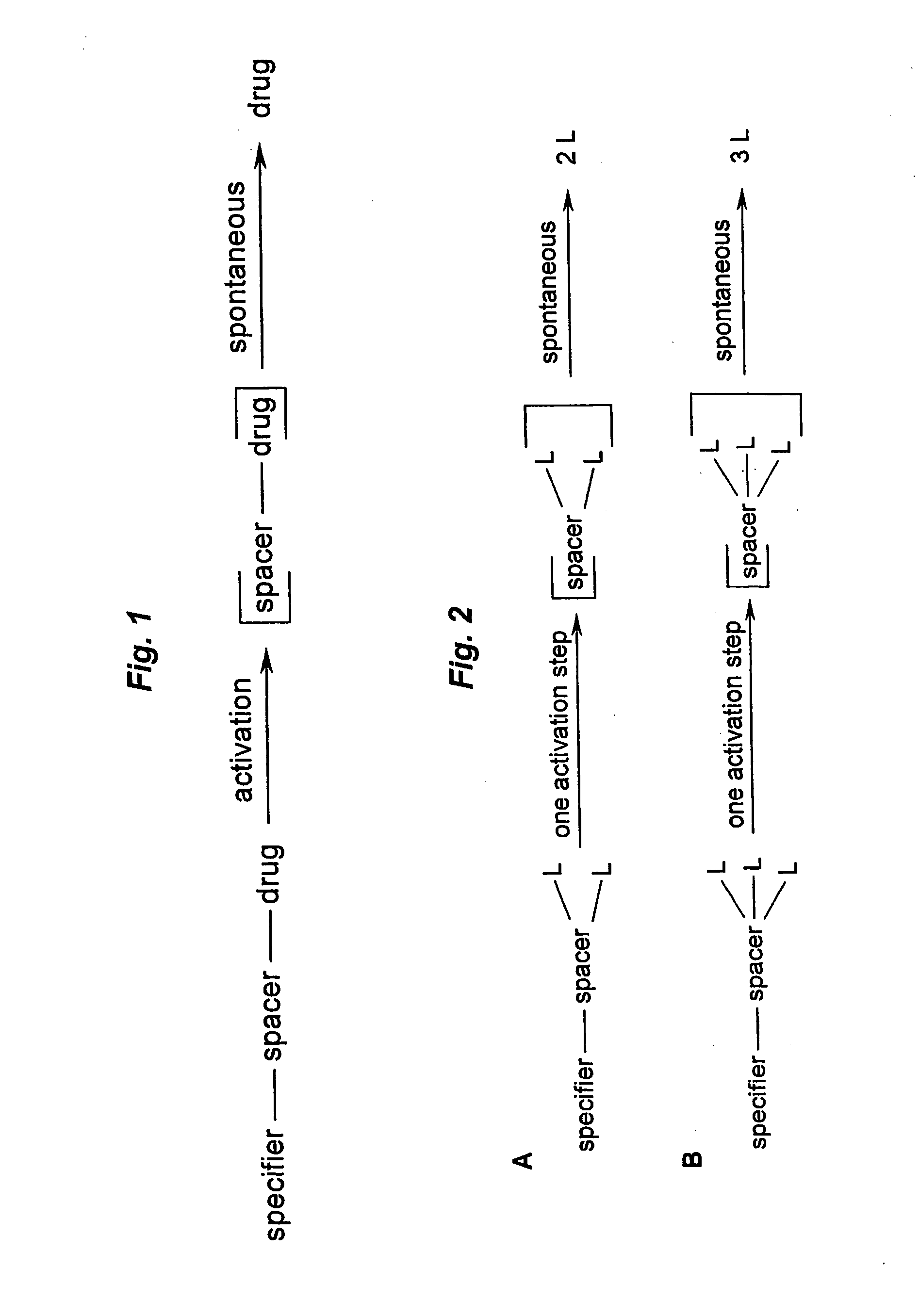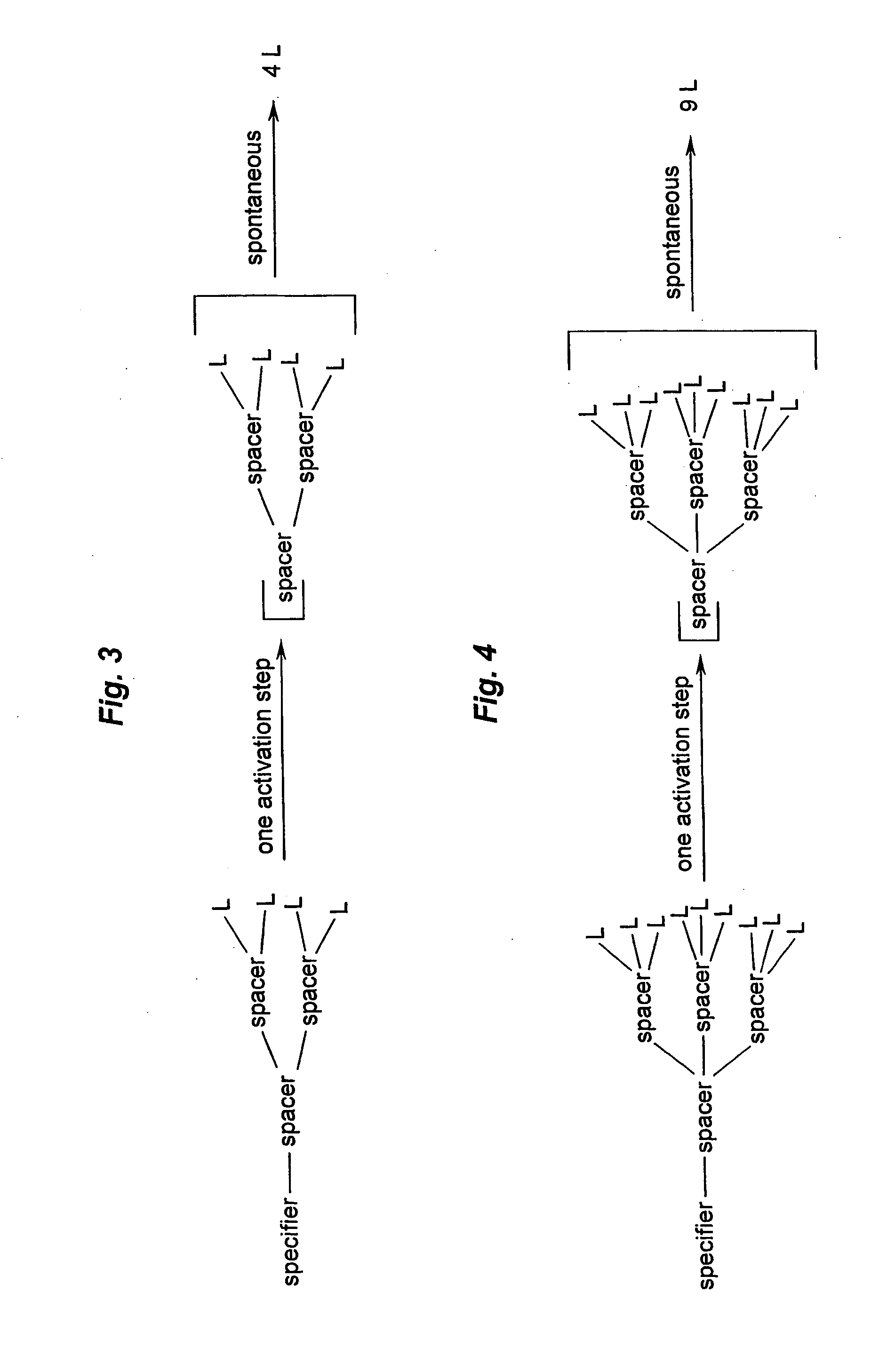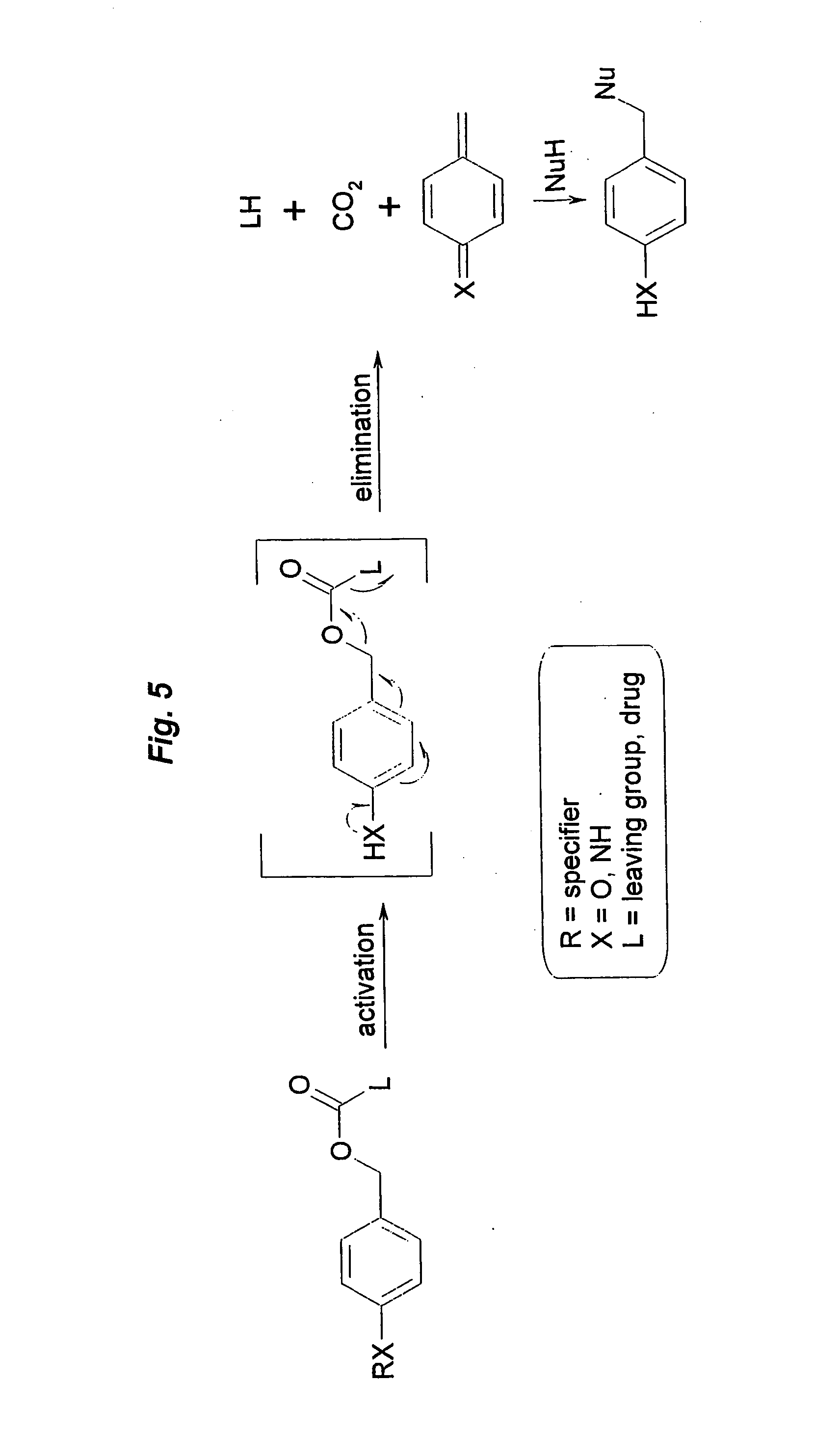Prodrugs built as multiple self-elimination-release spacers
a technology of self-elimination and prodrugs, which is applied in the direction of applications, drug compositions, peptides, etc., can solve the problems of drug concentrations that cannot completely eradicate the tumor, lack of selectivity of chemotherapeutic agents, and typically associated with severe side effects
- Summary
- Abstract
- Description
- Claims
- Application Information
AI Technical Summary
Problems solved by technology
Method used
Image
Examples
example 1
[0210] Activation of nitrotriol 11 to give triply activated 12 (see FIG. 9). 100 mg (0.47 nmmol) of nitrotriol 11 was dissolved in 6 mL of dry THF under an argon atmosphere. The solution was added dropwise to a solution of 4-nitrophenyl chloroformate (1.42 g, 15 equiv) and pyridine (569 μL, 15 equiv) in 5 mL dry THF. The reaction mixture was stirred for 1 h, dichloromethane was added, and the organic layer was washed with 10% citric acid and brine. The organic layer was dried over anhydrous sodium sulfate and evaporated to dryness. The product was purified by means of column chromatography (EtOAc / heptane 3 / 5) to afford 139 mg (42%) of triply activated 12. 1H-NMR (300 MHz, CDCl3) δ 5.41 (s, 2H, CH2), 5.47 (s, 4H, CH2), 7.37-7.42 (m, 6H, aromatic), 7.76 (s, 2H, aromatic), 8.26-8.30 (m, 6H, aromatic) ppm; FAB-MS m / e 709 (M+H)+, 731 (M+Na)+; Anal. (C30H20O17N4) calculated C 50.86%, H 2.85%, N 7.91%, measured C 51.09%, H 3.13%, N 7.54%.
example 2
[0211] Coupling of benzyl alcohol to triply activated 12 to give 13 (see FIG. 9). Triply activated 12 (29.5 mg, 0.042 mmol) was dissolved in dry dichloromethane. Benzyl alcohol (13 μL, 3.1 equiv) and DMAP (17 mg, 3.3 equiv) were added and the reaction mixture was stirred for 64 h. Dichloromethane was added and the organic layer was washed with saturated sodium bicarbonate, 10% citric acid, and brine, and dried over sodium sulfate. The product was purified by means of column chromatography (EtOAc / heptane 3 / 5) to afford 15 mg (59%) of desired product 13. 1H-NMR (300 MHz, CDCl3) δ 5.15-5.18 (m, 8H, benzylic), 5.27 (s, 4H, benzylic), 7.33-7.39 (m, 15H, aromatic benzyl alcohol), 7.52 (s, 2H, aromatic spacer) ppm.
example 3
[0212] Coupling of phenethyl alcohol to triply activated 12 to give 14 (see FIG. 9). Triply activated 12 (27 mg, 0.038 mmol) was dissolved in dry dichloromethane and the solution was cooled to 0° C. Phenethyl alcohol (16 μL, 3.5 equiv) and DMAP (16 mg, 3.5 equiv) were added and the reaction mixture was allowed to reach Rt and was stirred for 40 h. Dichloromethane was added and the organic layer was washed with saturated sodium bicarbonate, 10% citric acid, and brine, and dried over sodium sulfate. The product was purified by means of column chromatography (EtOAc / heptane 1 / 1) to afford 14 mg (57%) of desired product 14. 1H-NMR (300 MHz, DMSO-D6 / CDCl3 / CD3OD) δ 2.91 (m, 6H, CH2CH2Ph), 4.30 (m, 6H, CH2CH2Ph), 5.18 (m, 6H, OCH2Ph), 7.14-7.28 (m, 15H, aromatic), 7.58 (s, 2H, aromatic) ppm; ESI-MS m / e 680 (M+Na)+.
PUM
| Property | Measurement | Unit |
|---|---|---|
| temperature | aaaaa | aaaaa |
| concentrations | aaaaa | aaaaa |
| resistance | aaaaa | aaaaa |
Abstract
Description
Claims
Application Information
 Login to View More
Login to View More - R&D
- Intellectual Property
- Life Sciences
- Materials
- Tech Scout
- Unparalleled Data Quality
- Higher Quality Content
- 60% Fewer Hallucinations
Browse by: Latest US Patents, China's latest patents, Technical Efficacy Thesaurus, Application Domain, Technology Topic, Popular Technical Reports.
© 2025 PatSnap. All rights reserved.Legal|Privacy policy|Modern Slavery Act Transparency Statement|Sitemap|About US| Contact US: help@patsnap.com



